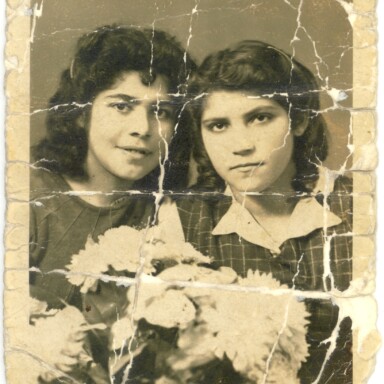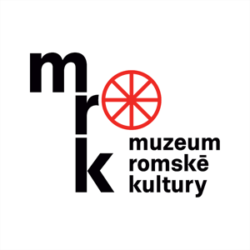
Berta Berousková, aka Amerika, née Richtrová (1928), in a photograph taken at the end of the war. She was interned in the so-called gypsy camp at Lety near Písek, and when she was released from there had to leave for forced labour. She managed to escape during sabotage by partisans, but was shot and wounded during her escape.
Photograph from the collection of the Museum of Romani Culture.
Berta Berousková
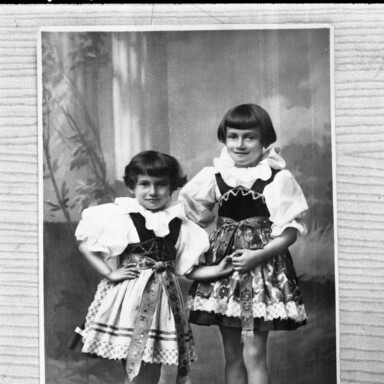
Jan Bystřický (1934). The photograph shows his sisters Antonie and Božena Bystřická in the folk costume of the Haná region in the early 1930s. The family was saved from persecution thanks to a warning from a gendarme. Gendarmes from Vyškov as well as a criminal inspector in Brno helped achieve their release from the Provincial Labour Enforcement Camp, where they were interned.
Photograph from the collection of the Museum of Romani Culture.
Jan Bystřický
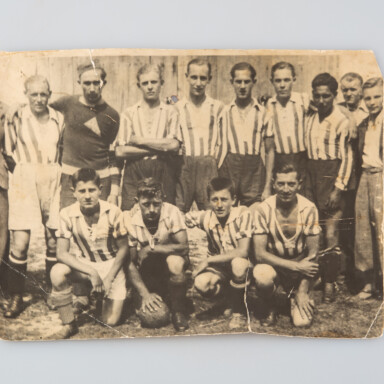
František Daniel (1921) as a member of a football eleven (third from left at the top) in the 1930s. He was imprisoned in the so-called gypsy camp in Hodonín because of the family he belonged to, and later deported to Auschwitz. He lost his parents and seven sisters during the war.
Photograph from the collection of the Museum of Romani Culture.
František Daniel
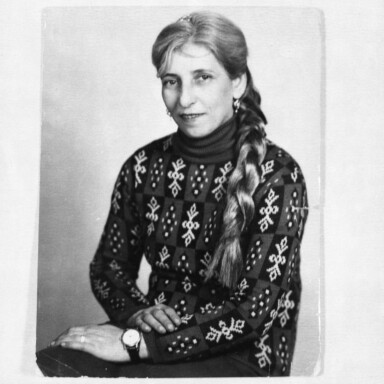
Alžběta Danielová, née Serynková (1924), pictured in the post-war years. In 1942, she was transported to the so-called gypsy camp in Lety near Písek, where her little sister Antonia died a few days later. Alžběta was then interned in a number of concentration camps including Auschwitz II - Birkenau and Ravensbrück.
Photograph from the collection of the Museum of Romani Culture.
Alžběta Danielová
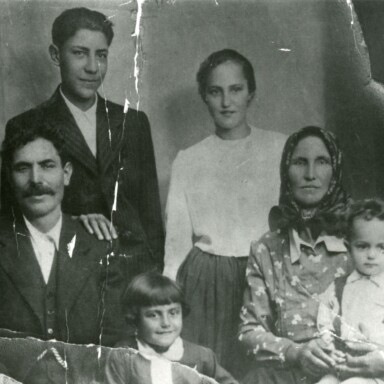
Vlasta Danielová, née Kierová (1925), as a 14-year-old (centre) with her parents and siblings. She survived imprisonment in Auschwitz II – Birkenau, and a death march. She lost her parents and only two of her six siblings returned home. She is one of the performers of the camp song Aušvicate hi kher báro.
Photograph from the collection of the Museum of Romani Culture.
Vlasta Danielová

Anežka Klaudová (1925) just after the war. She was born into a mixed family in a long-settled Roma community. The family was taken to a collection point, but only her 20-year-old brother was taken away. He died in Buchenwald concentration camp.
Photograph from the collection of the Museum of Romani Culture.
Anežka Klaudová
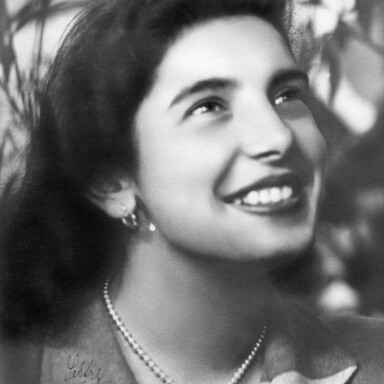
Karolina Kozáková-Vdolečková, née Růžičková (1932), as a seventeen-year-old. In her autobiography she recalls her pre-war "life in a wagon", and the wartime. The whole family was saved from deportation to a concentration camp by a wealthy uncle.
Photograph from the collection of the Museum of Romani Culture.
Karolina Kozáková-Vdolečková
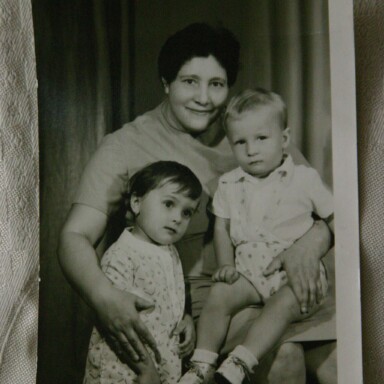
Anna Kýrová (1927) with her grandchildren, 1980s. Despite their efforts to avoid being transported, the long-settled family was deported to Auschwitz II - Birkenau, where Anna's mother and younger sister Apolena, 12, were killed.
Photograph from the collection of the Museum of Romani Culture.
Anna Kýrová
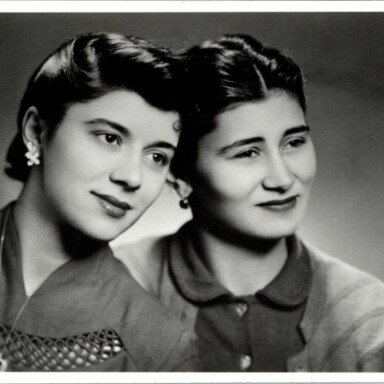
Hilda Laníková, nee. Ondrášová (1936) with her cousin. At the age of six she was imprisoned with her family in the so-called gypsy camp in Hodonín u Kunštátu. After their release, they tried to cross the border to Slovakia out of concerns for their safety, but were detained and imprisoned in Brno at Cejl.
Photograph from the collection of the Museum of Romani Culture.
Hilda Laníková

Emílie Machálková, née Holomková (1926), as a two-year-old girl with her mother Rosina, brother Miroslav and uncle Slávek. The mayor of Nesovice saved her and her parents and siblings from deportation; her uncle Slávek was executed in the Auschwitz II-Birkenau concentration camp.
Photograph from the collection of the Museum of Romani Culture.
Emílie Machálková
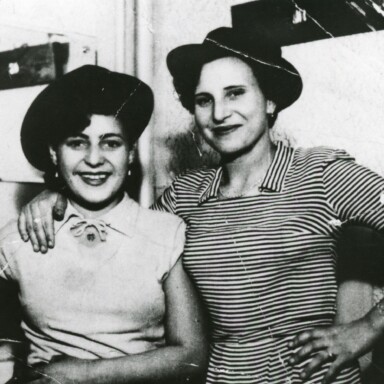
Helena Malíková, née Holomková (1926), with her friend and cellmate (left) in the hotel where they worked after the war. After her internment in Hodonín, she was taken to Auschwitz II - Birkenau, where she was subjected to pseudo-medical experiments that for a long time prevented her from having children. She was one of the three well-known interpreters of the song Aušvicate hi khér báro.
Photograph from the collection of the Museum of Romani Culture.
Helena Malíková

Marie (known as Květa) Ondrášová (1926) as a twelve-year-old at her First Communion. Together with her family, she was interned in the so-called gypsy camp in Hodonín, where she became a helper in the infirmary. She helped her mother give birth to a child who survived, but under unclear circumstances the child was not returned to the family until after the war. The family was released from the camp.
Photograph from the collection of the Museum of Romani Culture.
Marie Ondrášová
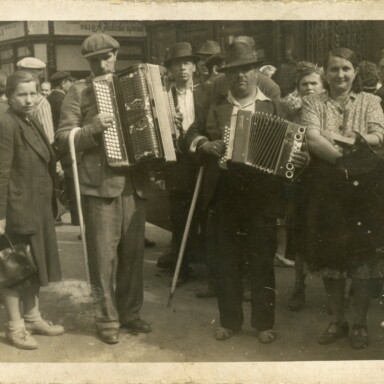
František Vrba (1939) was imprisoned as a child with his family in the camp at Lety. The Photograph shows his father Ferdinand Vrba (1904), a blind horse handler and accordion player, and his uncle Ferda Janeček in the middle left; 1950s.
Photograph from the collection of the Museum of Romani Culture.
František Vrba
